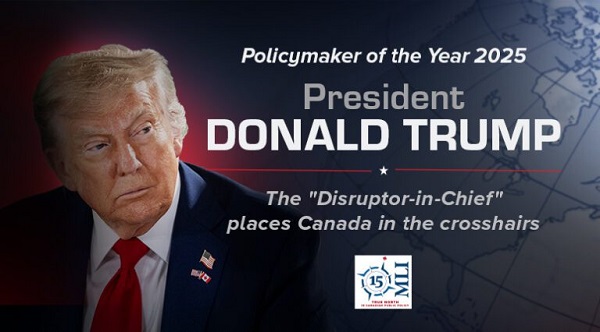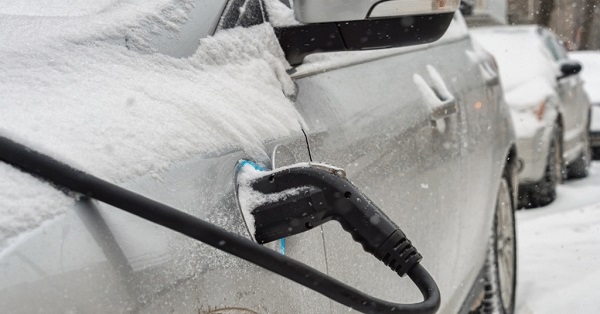Alberta
IN CASE OF EMERGENCY, READ THIS! ALBERTA’S COVID-19 REPORT
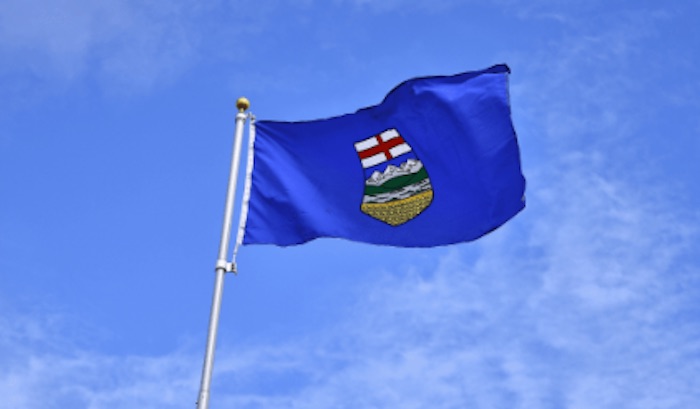
From the Frontier Centre for Public Policy
By Barry Cooper
The report calls for emergency management experts – not doctors or health care bureaucrats – to be in charge when such disasters strike, with politicians who are accountable to the people making the key decisions. Most important, the report demands much stronger protection for the individual freedoms that panic-stricken governments and overbearing professional organizations so readily quashed.
Nobody needs reminding that the Covid-19 pandemic – and the official responses to it – left hardly a person, group or country unaffected. From the lost learning of school closures to the crushed businesses and ruined lives, to the recurring social separation, to the physical toll itself, the wreckage came to resemble recession, social disintegration, war and the ravages of disease all in one. Yet the governments and organizations that designed and oversaw the emergency’s “management” have proved decidedly incurious about delving into whether they actually did a good job of it: what went right, what went wrong, who was responsible for which concepts and policies, who told the truth and who didn’t, and what might be done better next time. Few countries are performing any such formal evaluation (the UK and Sweden being prominent exceptions).
In Canada, the Justin Trudeau government has rebuffed calls for a public inquiry (perhaps a small mercy, as it is hard to envision this prime minister not politicizing such an exercise). Nearly every Canadian province is also ignoring the matter. The sole exception is Alberta, which in January created the Public Health Emergencies Governance Review Panel to, as its terms of reference state, “review the legislation and governance practices typically used by the Government of Alberta during the management of public health emergencies and other emergencies to recommend changes which, in the view of the Panel, are necessary to improve the Government of Alberta’s response to future emergencies.” The Panel’s inquiry fulfilled a promise made by Premier Danielle Smith when she was running for the leadership of the United Conservative Party.
These terms of reference need to be understood because they greatly influenced what followed – both the restrictions on the Review Panel’s inquiries and the broad scope of its recommendations, released in a densely written Final Report (367 pages including appendices) on November 15. The Panel was chaired by Preston Manning, Leader of the Official Opposition in Ottawa some 25 years ago but who more recently became a prominent voice of skepticism regarding the pandemic response, particularly the dismissive treatment of Canadians’ rights and liberties. With this report Manning has driven and led not one but two major pandemic-related reviews, as he was also central in the non-governmental National Citizens Inquiry on Canada’s Response to the Pandemic, which heard wrenching personal testimony.
Despite working under limitations, Manning and his colleagues have rendered valuable and, indeed, unparalleled public services with each effort. Here one must note whom Manning requested for Alberta’s Review Panel. They are in alphabetical order: Martha Fulford, an academic pediatrician at McMaster University with numerous scholarly articles to her credit; Michel Kelly-Gagnon, a businessman and President Emeritus of the Montreal Economic Institute; John C. Major, a former Justice of the Supreme Court of Canada; Jack Mintz, arguably Canada’s most distinguished living economist; and Rob Tanguay, a Calgary-based clinical psychiatrist specializing in treating addiction, depression and pain. Additional specialists prepared several of the report’s 11 appendices.
This is important because the response of Alberta’s NDP and its left-wing media helpers has been to accuse the Panel of mongering conspiracy theories and attempting to legitimize quack pseudo-science. They are using Manning, the founder and longtime leader of the Reform Party of Canada, as a convenient whipping boy. But they are effectively calling the entire panel – including a former member of the nation’s highest court who stood out for his calm and measured approach – a bunch of nutters if not worse. These critics seem to have emitted not one positive thought about any aspect of the Panel Report. That tells you a great deal about them, including that they probably didn’t even read it.
The report also prompted some balanced to favourable coverage, including from several journalists who previously were pro-lockdown, pro-masking and/or pro-vaccine. Edmonton Sun columnist Lorne Gunter, for example, termed the report “sensible and moderate,” noting that it calls for following “all of the credible science.” Gunter’s use of “all” is significant for, he notes, “a lot of what was pitched to the public as definitive scientific knowledge, such as the vitalness of mask and vaccine mandates, school closures, event cancellations and lockdowns was questioned by solid, reputable scientists (not just streetcorner anti-vaxxers and ‘I did my own research’ social-media experts).” Calgary Herald columnist Don Braid, a habitual UCP critic, also sounded impressed.
Alberta had a thoroughly designed, tested and previously deployed emergency plan. It just chose not to use it against Covid-19. This bizarre and gravely damaging decision has still not been explained.
So what is actually in the report? Chapter 1’s review of the Panel’s purpose notes it was set up to review the procedures Alberta has to respond to “any public emergency, including a public health emergency,” and how its preparations could be improved, including by broadening and deepening “the role of science in coping with future emergencies.” Its purpose was not to criticize Alberta’s actual responses to the Covid-19 event. While the Covid-19 public health emergency was the initial reason the panel was established, its recommendations would apply more broadly. And while science should be considered central to good public policy, science should not be regarded as consisting of a single narrative. Accordingly, “alternative perspectives” (Report, p. 5) should also be considered.
Alberta Emergency Management Agency
The spring 2020 spectacle of wildly shifting statements from public health officials and political leaders, its blizzard of decrees and edicts, proliferating “mandates,” haphazard changes of direction, imposition of seemingly arbitrary rules, public chaos, and sheer aura of panic – sweat-drenched faces, bulging eyes – might lead any citizen to believe that governments had never planned for or faced an emergency. The promiscuous use of “unprecedented” to describe Covid-19 only added to this feeling. In fact, Alberta had a thoroughly designed, tested and previously deployed emergency plan. It just chose not to use it against Covid-19. This bizarre and gravely damaging decision has still not been explained.
The Final Report’s largely overlooked Chapter 2 discusses improvements to the Alberta Emergency Management Agency (AEMA), making it important on several levels. The Panel recommends AEMA be adequately funded and remain the lead agency in dealing with any future emergency, including any future medical emergency. This alone is huge and hugely welcome. To ensure that individuals who are capable of dealing with emergencies and not just apprehended medical crises are in fact in charge, the Panel recommends several legislative changes to the Emergency Management Act and Public Health Act. Even better.
This sound recommendation rests upon the distinction between emergency management and normal policy decisions made by bureaucrats. The original Alberta emergency plan was developed in 2005 to deal with an anticipated influenza pandemic, and was in turn based on planning initiated across North America following the 9/11 terror atrocity. Alberta’s plan was similar to the approach followed by Sweden in 2020, which despite widespread initial condemnation proved highly successful. Its essential feature was that it was written and was to be implemented by individuals who specialize in emergencies, not by individuals with alleged expertise in the specific attributes of an anticipated emergency such as influenza or Covid-19, what the Panel on page 25 refers to as “subject-matter experts” (a more extensive quote is below).
By way of analogy, societies well-prepared to deal with emergencies do not put a limnologist in charge of an emergency response when riverbanks are unexpectedly breached and cause catastrophic flooding. Nor do they scramble to place a vulcanologist in charge when a volcano erupts and threatens lives and livelihoods. The purpose of putting highly trained emergency professionals in the lead during difficult situations is to remove as much as possible the shock effect from the surprises that emergencies typically bring, especially to normal politicians and conventional bureaucrats who expect normalcy to last forever and who panic when it doesn’t.
The emergency plan Alberta had going into 2020 was designed by David Redman, a former senior Canadian Forces officer whose 27 years of service included combat experience, a vocation that typically deals with unexpected surprises. The problem as the pandemic began was not in any lacunae that the Alberta emergency plan may have contained. Rather, as Redman, who at the time was director of Community Programs for Emergency Management (i.e., coordinating local responses), told C2C Journal in an interview in late 2020, “Governments took every plan they had ever written and threw them all out the window. No one followed the process. [The politicians] panicked, put the doctors in charge, and hid for three months.”
Redman was also emphatic on the question of fear, which is inevitably transmitted by panicked officials. He spent countless hours during the pandemic trying to warn every Canadian premier and many federal politicians that discarding emergency management principles and giving healthcare bureaucrats unprecedented authority was dangerous and would likely lead to disaster. Specifically, he urged healthcare officials and politicians to avoid expressing fear. Instead, he sadly noted in an interview with the Western Standard last week, “They used fear as a weapon. In emergency management you never use fear. You use confidence. You show confidence that the emergency can be handled and present a plan to show how this will be achieved.”
The Government of Alberta made a catastrophic and, as said, never-explained mistake when it turned the province over to a narrowly focused, unimaginative career bureaucrat credentialed only with an M.D. To be fair, this was probably too much for any one person, and Chief Medical Officer of Health Deena Hinshaw was placed in a near-impossible position. The consequences of this decision led to the removal of Premier Jason Kenney, and it is also why nearly the first thing his successor did was fire Hinshaw. That is also why the Manning Panel was commissioned.
So let us agree that the Panel’s recommendations to strengthen AEMA would improve emergency management the next time it is needed. That said, the Panel ignored the fact (or at least declined to state) that, had existing procedures been followed in 2020, things would have turned out much better.
Making Proper Use of Science – and Avoiding the Dictatorship of “Experts”
Chapter 3 deals with the place of “science” in public policy. It was self-evident to the Panel that science could help fashion sound public policy responses but could also be used for “political expedience and ideology.” Here the Panel was half-right. On the one hand it advanced a notion of “the scientific method” that dominated science classes a couple of generations ago. According to this account, a researcher develops testable hypotheses that can be modified in light of experimental results. Such was the philosophy of science that I was taught in grade 7 physics.
Its great defect is that it takes no account of what we now call conflicting paradigms or of what German Enlightenment-era philosopher Immanuel Kant called the power of judgment. A pandemic, for example, is not a “fact” but the product of somebody’s judgement. On the other hand, the Panel showed great clarity in asserting that “science is open to the consideration and investigation of alternative hypotheses…and is subject to some degree of uncertainty as an ever-present characteristic of scientific deliberations.” (Report, p. 24)
Before considering how it elaborated the problems of conflicting and alternative hypotheses and of uncertainty, one should note how opponents to both the Panel and UCP government responded to its commonsensical observations. According to NDP Leader Rachel Notley, they were “incredibly irresponsible.” Indeed, she asserted, “What you see is an invitation to normalize conspiracy theories and pseudo-science at the expense of evidence-based medical care.” Notley and CTV went on to attack Premier Smith for embracing “fringe views” – including those found in the October 2020 Great Barrington Declaration, a document written by three of the world’s most respected epidemiologists and subsequently endorsed by, at last count, 939,000 fellow scientists.
One of the Panel-endorsed “fringe views” was that “the number one priority” when a pandemic event is declared should be “protection of the most vulnerable,” (Report, p. 25) which is to say not everybody. Should a particular pandemic’s impact subsequently spread to other social, political and economic relationships, this priority may be modified and adjusted. That sounds eminently responsible, but the NDP wants everybody locked down right from the start.
Still the real question is: who would order the adjustments? The Panel’s answer is forthright, much to the consternation of scientific “experts”: “That a clear and conscious decision be made by elected officials as to the scope of the scientific advice to be sought and that this decision not be left entirely to the subject-matter agency, given that it may have a narrower perspective than that actually required.” (Report, p. 25, emphasis added) As Manning later said: “Political people have to be responsible for the overall direction and management because they’re the people that the public can hold accountable.”
Manning’s determination to avoid having a democracy become a dictatorship of “experts” also reflects a critical aspect of pandemic response: that there are issues far beyond medicine in play, and that the associated decisions are not scientific ones. Weighing risks, for example, is an exercise in logic (a branch of philosophy) and judgment, which depends on inductive reasoning. Assessing costs and benefits of various possible actions is economic in nature. And then, deciding just how much risk to take on and what costs to bear in the pursuit of benefits are questions of ethics. Such things should be undertaken by politicians because, if the people as a whole have a different view of such matters, they can vote in a different government (or, as happened in Alberta, select a decidedly different leader from the same party).
To the experts and their spokespersons, this was an anathema. Lorian Hardcastle, an associate professor in the University of Calgary’s law school and medical school, warned: “We would see ideologically driven response to a public health emergency” that would make it difficult “to keep people alive.” We can characterize the Hardcastle position, which was endorsed strongly during the pandemic by legacy media, the NDP, the “expert” class and the health care bureaucracy, as the “orthodox” doctrine. A health care emergency must be left to the so-called health care experts. Everyone else (including presidents, prime ministers and premiers) should defer to their expertise and do as they are told. The public “conversation” is entirely one-way.
In reality, however, public health does not involve just a single disease but all aspects of the health of a population. Thus, focussing on illness stemming from the SARS-CoV-2 virus was not enough even for so-called specialists because such a focus meant that, for instance, cancer screening was postponed so hospitals would be empty enough to accept the (incorrectly) projected tsunami of Covid-19 patients. Yet cancer is also part of public health, as was the collateral damage from the economic and social effects of lockdowns, school closures and social distancing, none of which the orthodox doctrine considers. Skeptics pointed out all of this throughout the pandemic – and were shouted down as granny-killers.
Alberta
Alberta project would be “the biggest carbon capture and storage project in the world”

Pathways Alliance CEO Kendall Dilling is interviewed at the World Petroleum Congress in Calgary, Monday, Sept. 18, 2023.THE CANADIAN PRESS/Jeff McIntosh
From Resource Works
Carbon capture gives biggest bang for carbon tax buck CCS much cheaper than fuel switching: report
Canada’s climate change strategy is now joined at the hip to a pipeline. Two pipelines, actually — one for oil, one for carbon dioxide.
The MOU signed between Ottawa and Alberta two weeks ago ties a new oil pipeline to the Pathways Alliance, which includes what has been billed as the largest carbon capture proposal in the world.
One cannot proceed without the other. It’s quite possible neither will proceed.
The timing for multi-billion dollar carbon capture projects in general may be off, given the retreat we are now seeing from industry and government on decarbonization, especially in the U.S., our biggest energy customer and competitor.
But if the public, industry and our governments still think getting Canada’s GHG emissions down is a priority, decarbonizing Alberta oil, gas and heavy industry through CCS promises to be the most cost-effective technology approach.
New modelling by Clean Prosperity, a climate policy organization, finds large-scale carbon capture gets the biggest bang for the carbon tax buck.
Which makes sense. If oil and gas production in Alberta is Canada’s single largest emitter of CO2 and methane, it stands to reason that methane abatement and sequestering CO2 from oil and gas production is where the biggest gains are to be had.
A number of CCS projects are already in operation in Alberta, including Shell’s Quest project, which captures about 1 million tonnes of CO2 annually from the Scotford upgrader.
What is CO2 worth?
Clean Prosperity estimates industrial carbon pricing of $130 to $150 per tonne in Alberta and CCS could result in $90 billion in investment and 70 megatons (MT) annually of GHG abatement or sequestration. The lion’s share of that would come from CCS.
To put that in perspective, 70 MT is 10% of Canada’s total GHG emissions (694 MT).
The report cautions that these estimates are “hypothetical” and gives no timelines.
All of the main policy tools recommended by Clean Prosperity to achieve these GHG reductions are contained in the Ottawa-Alberta MOU.
One important policy in the MOU includes enhanced oil recovery (EOR), in which CO2 is injected into older conventional oil wells to increase output. While this increases oil production, it also sequesters large amounts of CO2.
Under Trudeau era policies, EOR was excluded from federal CCS tax credits. The MOU extends credits and other incentives to EOR, which improves the value proposition for carbon capture.
Under the MOU, Alberta agrees to raise its industrial carbon pricing from the current $95 per tonne to a minimum of $130 per tonne under its TIER system (Technology Innovation and Emission Reduction).
The biggest bang for the buck
Using a price of $130 to $150 per tonne, Clean Prosperity looked at two main pathways to GHG reductions: fuel switching in the power sector and CCS.
Fuel switching would involve replacing natural gas power generation with renewables, nuclear power, renewable natural gas or hydrogen.
“We calculated that fuel switching is more expensive,” Brendan Frank, director of policy and strategy for Clean Prosperity, told me.
Achieving the same GHG reductions through fuel switching would require industrial carbon prices of $300 to $1,000 per tonne, Frank said.
Clean Prosperity looked at five big sectoral emitters: oil and gas extraction, chemical manufacturing, pipeline transportation, petroleum refining, and cement manufacturing.
“We find that CCUS represents the largest opportunity for meaningful, cost-effective emissions reductions across five sectors,” the report states.

Fuel switching requires higher carbon prices than CCUS.
Measures like energy efficiency and methane abatement are included in Clean Prosperity’s calculations, but again CCS takes the biggest bite out of Alberta’s GHGs.
“Efficiency and (methane) abatement are a portion of it, but it’s a fairly small slice,” Frank said. “The overwhelming majority of it is in carbon capture.”

From left, Alberta Minister of Energy Marg McCuaig-Boyd, Shell Canada President Lorraine Mitchelmore, CEO of Royal Dutch Shell Ben van Beurden, Marathon Oil Executive Brian Maynard, Shell ER Manager, Stephen Velthuizen, and British High Commissioner to Canada Howard Drake open the valve to the Quest carbon capture and storage facility in Fort Saskatchewan Alta, on Friday November 6, 2015. Quest is designed to capture and safely store more than one million tonnes of CO2 each year an equivalent to the emissions from about 250,000 cars. THE CANADIAN PRESS/Jason Franson
Credit where credit is due
Setting an industrial carbon price is one thing. Putting it into effect through a workable carbon credit market is another.
“A high headline price is meaningless without higher credit prices,” the report states.
“TIER credit prices have declined steadily since 2023 and traded below $20 per tonne as of November 2025. With credit prices this low, the $95 per tonne headline price has a negligible effect on investment decisions and carbon markets will not drive CCUS deployment or fuel switching.”
Clean Prosperity recommends a kind of government-backstopped insurance mechanism guaranteeing carbon credit prices, which could otherwise be vulnerable to political and market vagaries.
Specifically, it recommends carbon contracts for difference (CCfD).
“A straight-forward way to think about it is insurance,” Frank explains.
Carbon credit prices are vulnerable to risks, including “stroke-of-pen risks,” in which governments change or cancel price schedules. There are also market risks.
CCfDs are contractual agreements between the private sector and government that guarantees a specific credit value over a specified time period.
“The private actor basically has insurance that the credits they’ll generate, as a result of making whatever low-carbon investment they’re after, will get a certain amount of revenue,” Frank said. “That certainty is enough to, in our view, unlock a lot of these projects.”
From the perspective of Canadian CCS equipment manufacturers like Vancouver’s Svante, there is one policy piece still missing from the MOU: eligibility for the Clean Technology Manufacturing (CTM) Investment tax credit.
“Carbon capture was left out of that,” said Svante co-founder Brett Henkel said.
Svante recently built a major manufacturing plant in Burnaby for its carbon capture filters and machines, with many of its prospective customers expected to be in the U.S.
The $20 billion Pathways project could be a huge boon for Canadian companies like Svante and Calgary’s Entropy. But there is fear Canadian CCS equipment manufacturers could be shut out of the project.
“If the oil sands companies put out for a bid all this equipment that’s needed, it is highly likely that a lot of that equipment is sourced outside of Canada, because the support for Canadian manufacturing is not there,” Henkel said.
Henkel hopes to see CCS manufacturing added to the eligibility for the CTM investment tax credit.
“To really build this eco-system in Canada and to support the Pathways Alliance project, we need that amendment to happen.”
Resource Works News
Alberta
Alberta Next Panel calls for less Ottawa—and it could pay off

From the Fraser Institute
By Tegan Hill
Last Friday, less than a week before Christmas, the Smith government quietly released the final report from its Alberta Next Panel, which assessed Alberta’s role in Canada. Among other things, the panel recommends that the federal government transfer some of its tax revenue to provincial governments so they can assume more control over the delivery of provincial services. Based on Canada’s experience in the 1990s, this plan could deliver real benefits for Albertans and all Canadians.
Federations such as Canada typically work best when governments stick to their constitutional lanes. Indeed, one of the benefits of being a federalist country is that different levels of government assume responsibility for programs they’re best suited to deliver. For example, it’s logical that the federal government handle national defence, while provincial governments are typically best positioned to understand and address the unique health-care and education needs of their citizens.
But there’s currently a mismatch between the share of taxes the provinces collect and the cost of delivering provincial responsibilities (e.g. health care, education, childcare, and social services). As such, Ottawa uses transfers—including the Canada Health Transfer (CHT)—to financially support the provinces in their areas of responsibility. But these funds come with conditions.
Consider health care. To receive CHT payments from Ottawa, provinces must abide by the Canada Health Act, which effectively prevents the provinces from experimenting with new ways of delivering and financing health care—including policies that are successful in other universal health-care countries. Given Canada’s health-care system is one of the developed world’s most expensive universal systems, yet Canadians face some of the longest wait times for physicians and worst access to medical technology (e.g. MRIs) and hospital beds, these restrictions limit badly needed innovation and hurt patients.
To give the provinces more flexibility, the Alberta Next Panel suggests the federal government shift tax points (and transfer GST) to the provinces to better align provincial revenues with provincial responsibilities while eliminating “strings” attached to such federal transfers. In other words, Ottawa would transfer a portion of its tax revenues from the federal income tax and federal sales tax to the provincial government so they have funds to experiment with what works best for their citizens, without conditions on how that money can be used.
According to the Alberta Next Panel poll, at least in Alberta, a majority of citizens support this type of provincial autonomy in delivering provincial programs—and again, it’s paid off before.
In the 1990s, amid a fiscal crisis (greater in scale, but not dissimilar to the one Ottawa faces today), the federal government reduced welfare and social assistance transfers to the provinces while simultaneously removing most of the “strings” attached to these dollars. These reforms allowed the provinces to introduce work incentives, for example, which would have previously triggered a reduction in federal transfers. The change to federal transfers sparked a wave of reforms as the provinces experimented with new ways to improve their welfare programs, and ultimately led to significant innovation that reduced welfare dependency from a high of 3.1 million in 1994 to a low of 1.6 million in 2008, while also reducing government spending on social assistance.
The Smith government’s Alberta Next Panel wants the federal government to transfer some of its tax revenues to the provinces and reduce restrictions on provincial program delivery. As Canada’s experience in the 1990s shows, this could spur real innovation that ultimately improves services for Albertans and all Canadians.
-

 Haultain Research4 hours ago
Haultain Research4 hours agoSweden Fixed What Canada Won’t Even Name
-

 Business1 day ago
Business1 day ago“Magnitude cannot be overstated”: Minnesota aid scam may reach $9 billion
-

 Business1 day ago
Business1 day agoLargest fraud in US history? Independent Journalist visits numerous daycare centres with no children, revealing massive scam
-

 Censorship Industrial Complex1 day ago
Censorship Industrial Complex1 day agoUS Under Secretary of State Slams UK and EU Over Online Speech Regulation, Announces Release of Files on Past Censorship Efforts
-
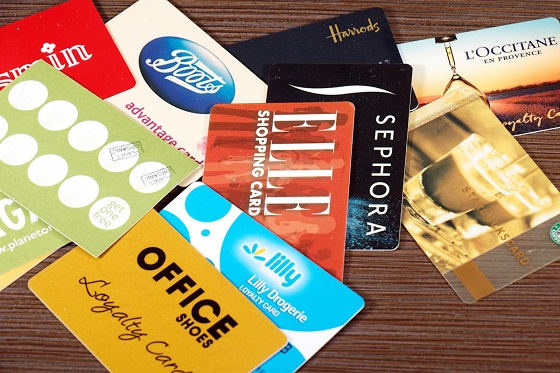
 Business4 hours ago
Business4 hours agoWhat Do Loyalty Rewards Programs Cost Us?
-
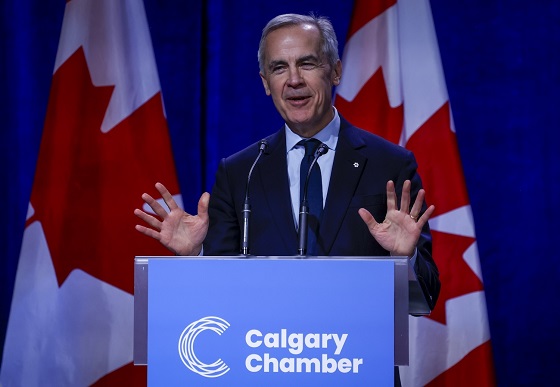
 Energy2 days ago
Energy2 days agoCanada’s debate on energy levelled up in 2025
-

 Daily Caller2 days ago
Daily Caller2 days agoIs Ukraine Peace Deal Doomed Before Zelenskyy And Trump Even Meet At Mar-A-Lago?






